When we planned our journey, is what very quickly clear that we want to follow the Danube for at least a few hundred kilometers. Firstly, because Hanna grew up on its shores and most of her family and friends still live here. Secondly, because it has its source only a few hundred km away from Frankfurt and flows south-east, so the same direction we are heading. Thirdly, because it is the largest river of Europe (excl. the Wolga on the eastern edge of Europe) and in many ways its most exciting and interesting. In the end, we decided to do follow the Danube for a relatively short part in favour of crossing the Bohemian Massif and the Carpathians.
Nevertheless, we were super excited to follow it from Vienna to Budapest and learn more about this river that is a lifeline for so many people. And oh have we learned. Talking to local environmentalists has taught us so many things about the incredible but often degraded nature along its course. Even for Hanna, who lived in Somorja, Budapest and Vienna – all situated at the Danube – for 25 out of her 28 years, this was eye-opening.
Nature conservation is taking place through many initiatives along the Danube. Donau-Auen National Park protects intact alluvial ecosystems. DunaVit engages local citizens to make small changes in agricultural and residential areas close to the Danube that collectively have a big impact. Pisztrang Kör teaches children and adults about nature and its value. And BROZ (Bratislavské regionálne ochranárske združenie / Regional Association for Nature Conservation and Sustainable Development) finds a balance between nature restoration, sustainable land use and ecotourism on Veľkolesky Island, our most recent stop.
Veľkolélsky Island is the last large Danube Island in Slovakia. It consists of meadows, alluvial forests, gravel beaches and is separated from the mainland by a shallow sidearm. Local farmers used to bring their livestock here for grazing in the summer as it was easy to contain them on the island. However, the island was more and more abandoned until grazing stopped completely in the 90s, after which the invasive weed Canadian goldenrod took over the meadows.
In 2006, BROZ started a LIFE project here to increase the ecological value of the island. Until today, they succeeded to purchase 75% of the land on the islands and implemented a whole plethora of measures to restore the island. Paralelly, they offer tours and other activities to attract visitors to the island. This combination made it an interesting stop for us on our learning journey along the Danube.
BROZ was kind enough to invite us for a tour of the island and a stay at the adjacent camp site. The camp site is part of the ecofarm that is also run by BROZ and offers accommodation, canoe tours, horse riding and educational activities. At 10 in the morning, we meet Andrea, who takes us on a bike trip around the island. Luckily, this time we can leave our heavy beasts of burden behind and get bikes that are a bit lighter. As we enter the island, Andrea explains its history and what BROZ is doing there. Veľkolélsky Island is located ca. 40 km downstream of the second largest hydropower plant of the Danube. This means that the natural water flow is altered and regulated. On top, this whole stretch of the Danube has been prepared for the construction of another planned hydropower plant 80 km downstream – especially on the Slovak side. Even though the hydropower plant was never built, the shores of the Danube were fortified and straightened and sidearms were cut off.
At Veľkolélsky Island, we get to know most of the measures that BROZ takes across Western Slovakia to restore wetlands and grasslands. The sidearm separating the island from the mainland was formerly closed off by a mound and only connected to the main channel at high water. As one of the first measures on and around the island, BROZ removed the mound in 2006, so that the water flows into the sidearm without any obstacles again. On the other side of the island at the main channel, large rocks were removed that were placed here to stabilize the shore. This has restored beautiful beaches, so we cannot resist going for a short dip in the river. But we are not the only ones feeling comfy here. Many birds also use these gravel beaches to breed.
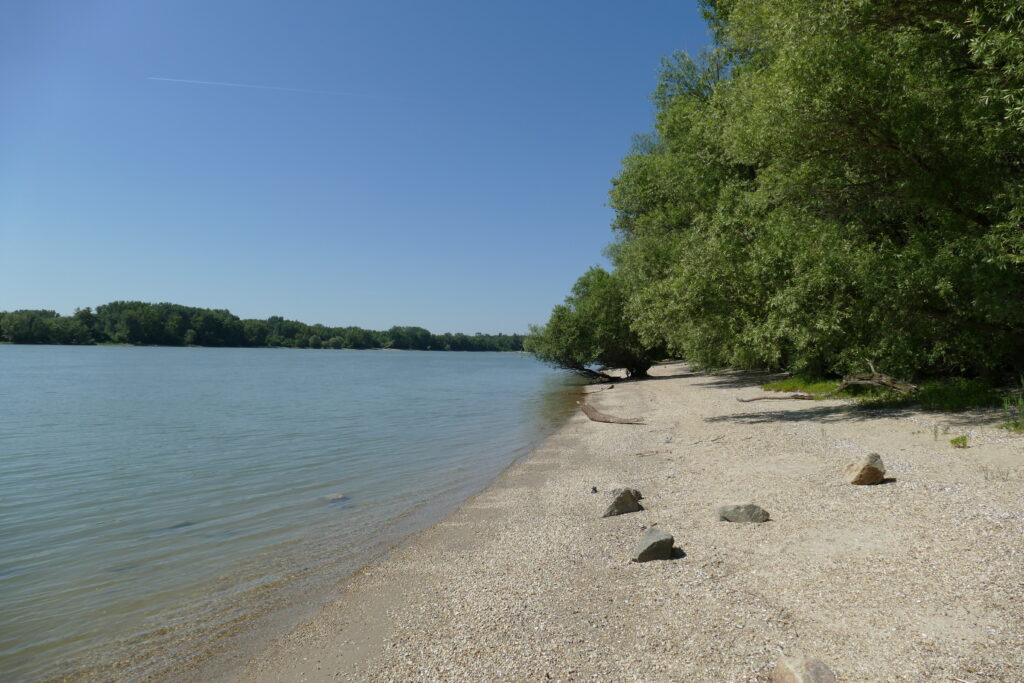
Inside the island, BROZ has restored a mix of traditional land use and natural habitats. As we continue cycling, we see cows, goats, sheep, horses, donkeys, and as Andrea tells us, even water buffaloes graze on the island. Since BROZ has re-established grazing, plant and insect biodiversity and abundance has increased again. We witness this with our own eyes every time we take a step in the long grass and a whole swarm of insects jumps or flies up to escape from us.
Grazing is one of the main activities of BROZ. In most places they find local farmers to graze valuable grasslands with their livestock. But here on Veľkolélsky Island, they do it all themselves. Over 300 animals graze on the island, which is not only good for biodiversity, but also a great sight for visitors. We saw funny-looking goats, cute baby donkeys and for a second almost thought we are in Jurassic Park when we heard the cow herd screaming like dinosaurs.
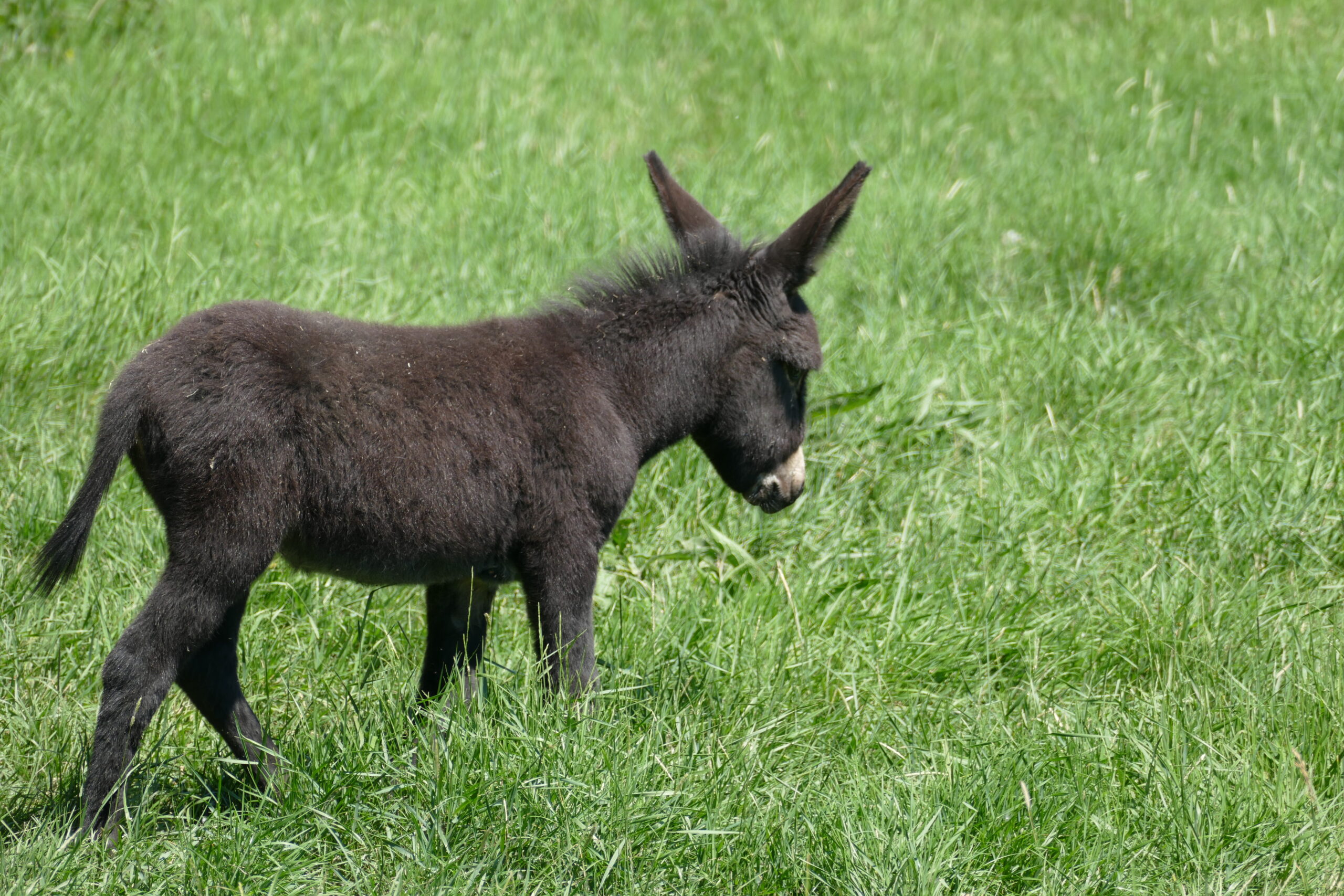
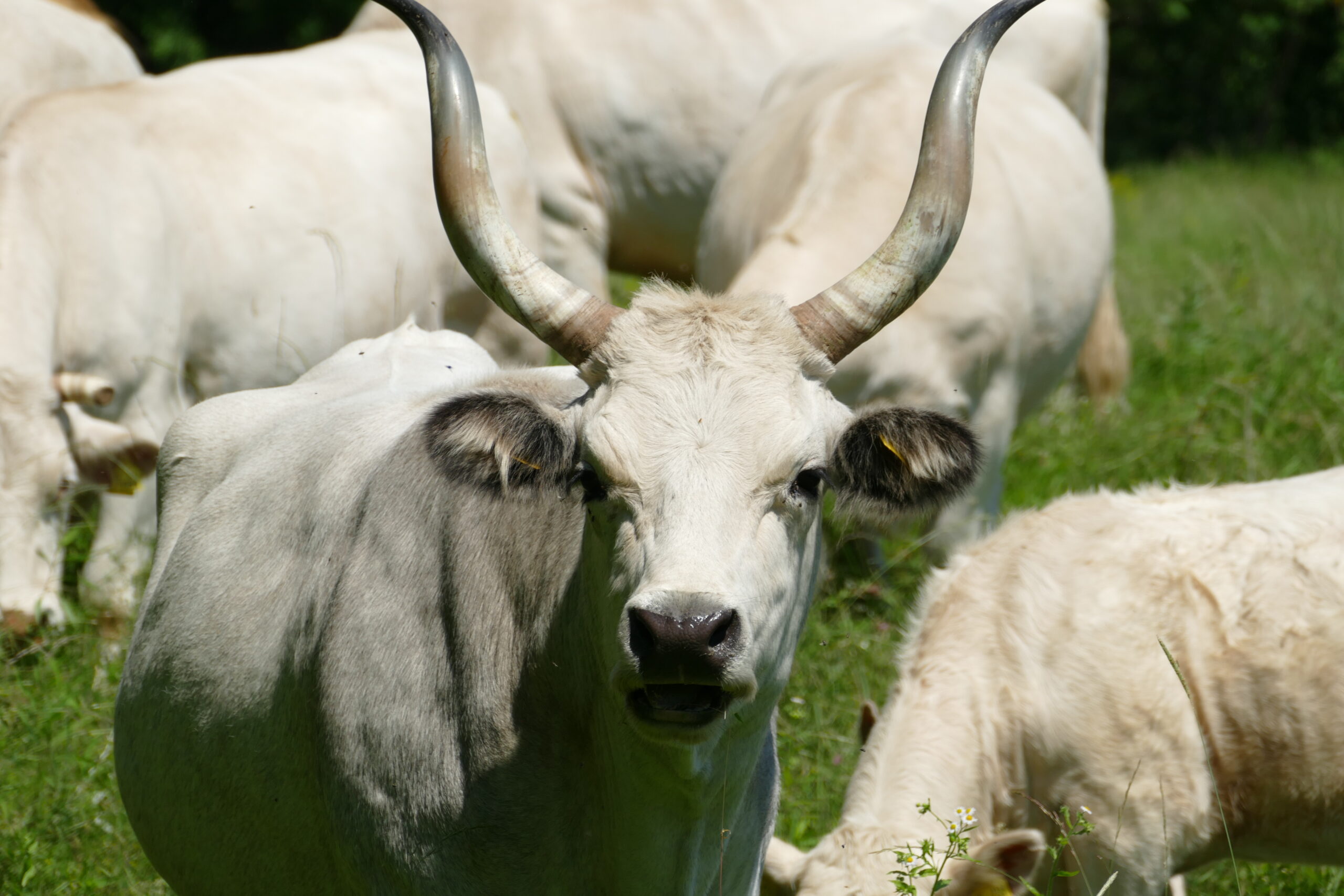
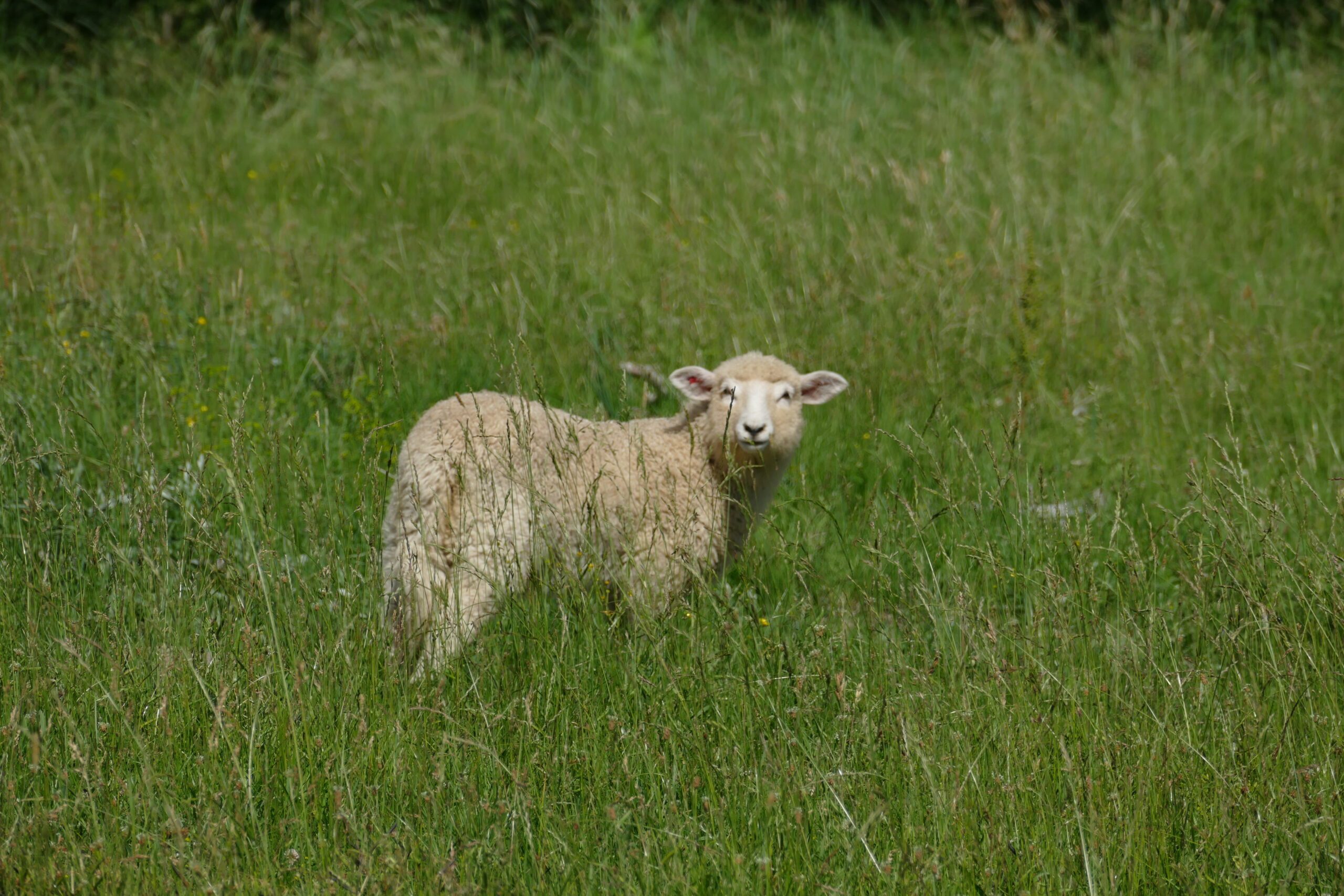
The third pillar of restoring the island is to turn the forest patches more natural. Floodplain forests are important for flood protection, home to a vast variety of biodiversity and important carbon storages. Andrea shows a willow plantation on a smaller islet in the sidearm that exemplifies how much carbon it can store. The small islet is hidden underneath meters of a thicket of dense willow branches that absorb carbon, nitrate and toxins from the water and turn it into biomass. We are baffled when Andrea tells us that the islet has been completely bare four years ago. We can´t imagine trees growing so quickly, especially after we think back to our discussions in Šumava about spruces of less than two meters height which can nevertheless be over 30 years old. But this shows us what incredible ecosystem alluvial forests are.
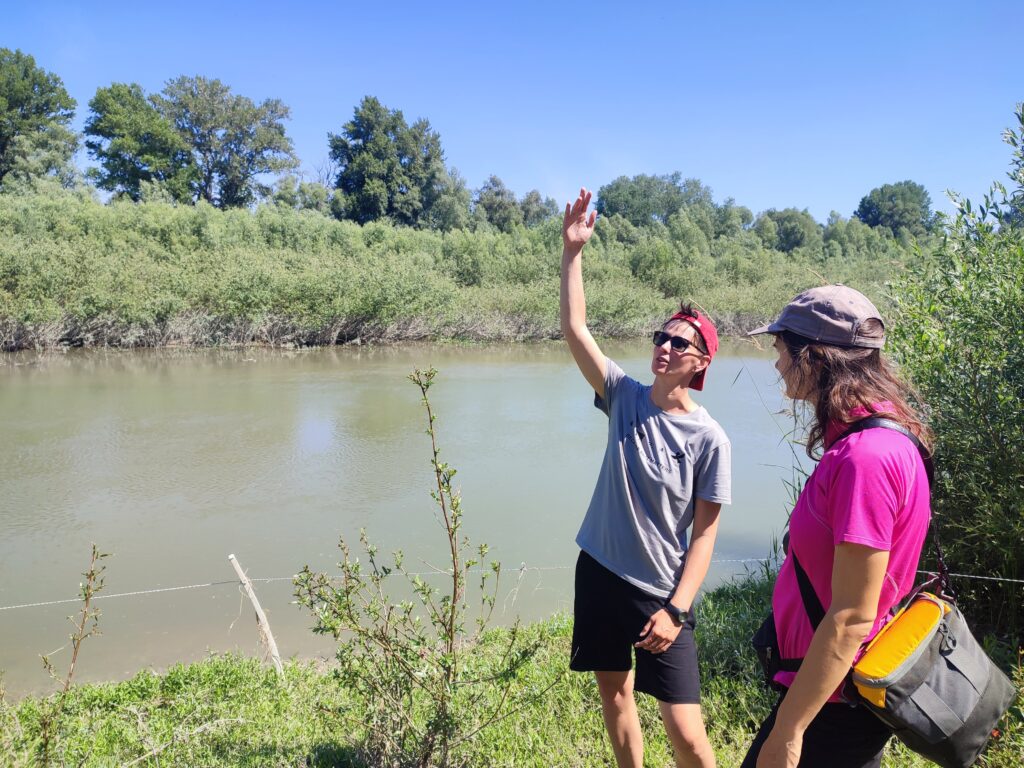
In a forest patch inside of the island, Andrea shows us the second aspect of forest restoration. In the past, a non-native hybrid poplar species has been planted here due to their fast and straight growth. However, exactly due to this straight growth, the trees are not suitable as a habitat for birds or insects. Therefore, BROZ is transforming the forest through removing the hybrid poplar and planting native black poplar that are the backbone of this type of alluvial forest.
How many organisms can live in and around one tree, we experience a little further. We inspect one of the solitary oaks on the meadows a little closer and what we find is bustling with life. The oak is hundreds of years old and lost of its branches in a storm a few years ago. Some would just look at it as a corpse, a ticking time bomb, but actually this oak is a true representation of life. Its hollow trunk is a perfect home for many insect species like the impressive stag beetle.
When we leave the island, we feel like we had a great short vacation and learned a lot about the nature of floodplains and its restoration at the same time. We did not only see plenty of plant and animal diversity, we also learned more about traditional land use and, simply put, had a bunch of fun. We cycled through this island as light as feathers without our heavy packs, went for a swim on a picturesque beach, watched the cows roar like dinosaurs and admired a cute baby donkey in a beautiful nature refuge.
Veľkolélsky Island shows how many benefits nature restoration projects can combine:
- Extensive and well-managed grazing benefits biodiversity and exemplifies sustainable land use.
- Intact alluvial forests store a great amount of carbon and protect from flooding.
- Restored island banks with pebble beeches and steep sand walls provide habitats for several bird species once common here to safely nest again.
- The beautiful island attracts visitors and tourists to explore the island by foot, bike, canoe or even horse back.
- Groups can book the campsite and special offers like guided tours, combining team activities and nature experiences.
- Through nature protection projects, BROZ can empower local communities and provide a livelihood for 17 locals who maintain the island and connected campsite.

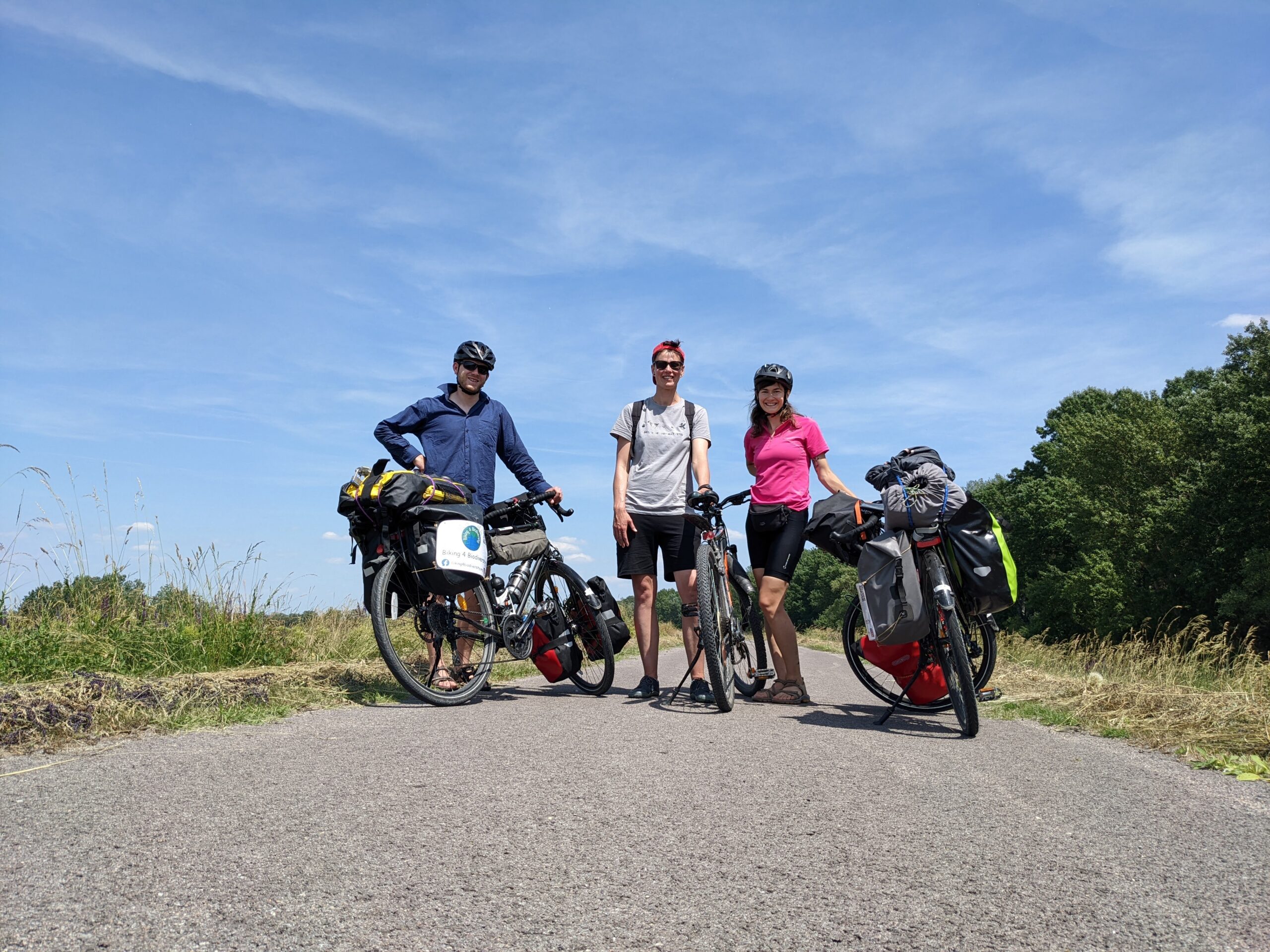
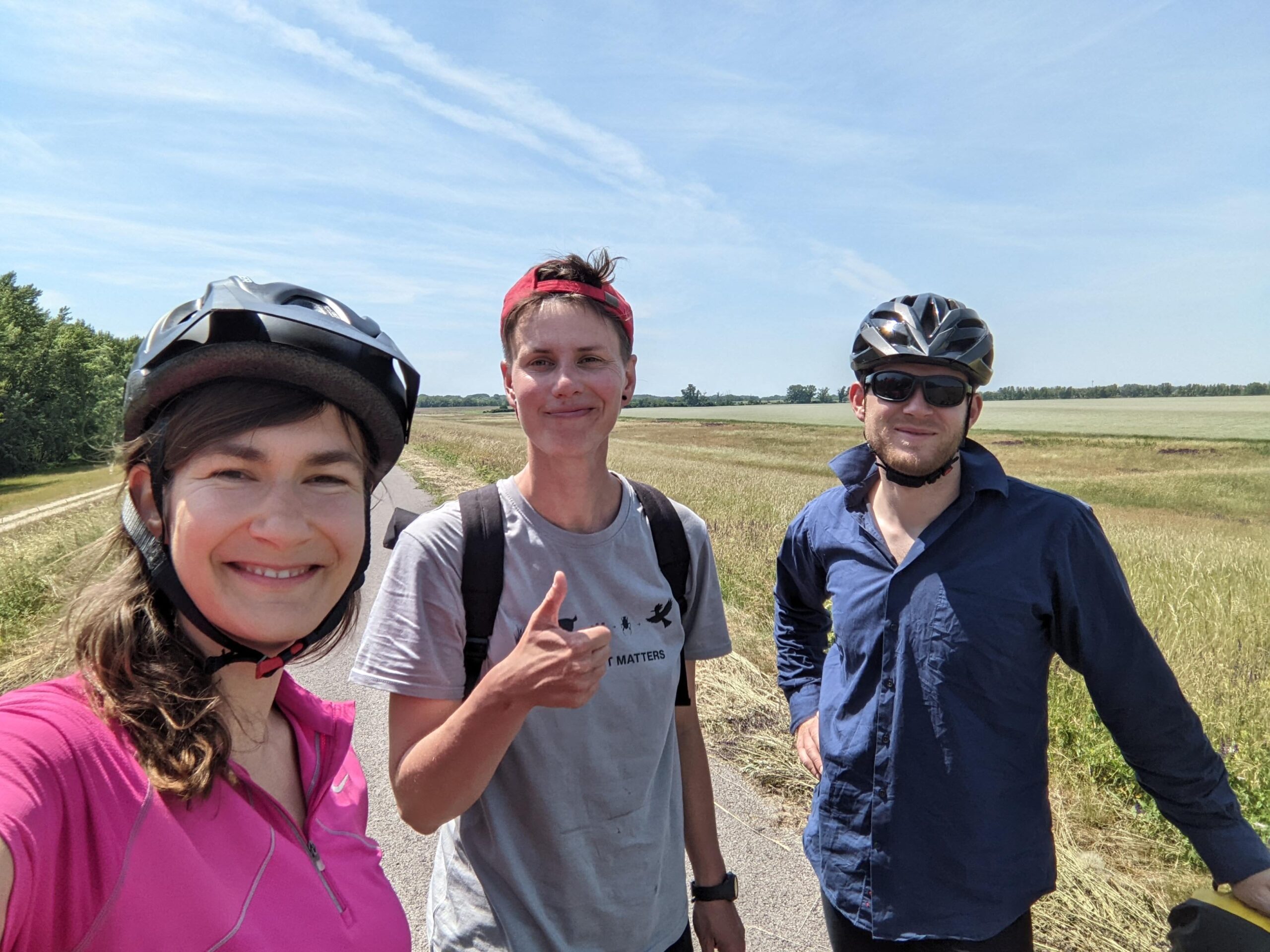
Veľkolélsky Island is an example of a Danube Island that shows that you don´t have to choose. An island can be a tourist and recreational destination without being completely built-in like for example Margit Island in Budapest. It also showcases that it is not always necessary to end all human use to create an ecologically valuable and intact island. In the right hands, there is a path that can lead to balance, where both Jurassic cows and people thrive here.

